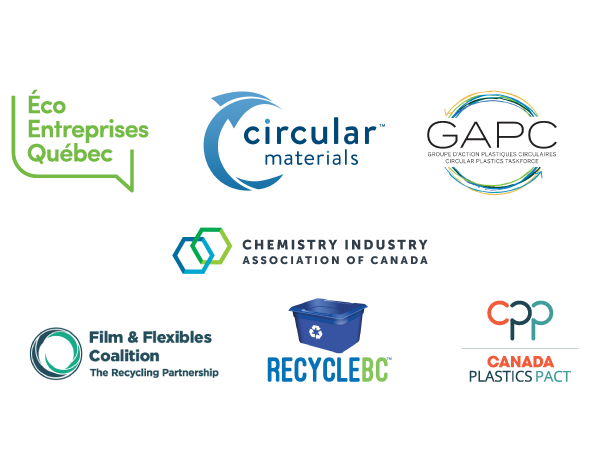Circular Materials and other circularity leaders launch PRFLEX – an initiative to optimize the recycling system for flexible plastic packaging in Canada
Circular Materials is pleased to announce that we have joined forces with Canada Plastics Pact (CPP), the Chemistry Industry Association of Canada (CIAC), the Circular Plastics Taskforce (CPT), Éco Entreprises Québec (ÉEQ) and The Recycling Partnership to launch PRFLEX, an initiative aimed at improving the recovery and recycling rates of flexible plastics collected from Canadian households.
Flexible packaging is recognized for its lightweight, durability, versatility, efficient extension of food shelf-life, and resource efficiency which offers sustainability advantages. However, given it is often made up of multiple resins and other materials, there are collection, sortation, and recycling infrastructure challenges that need to be addressed to improve its recyclability.
“We are proud to be part of this exciting collaboration that will help optimize the recycling system and improve recycling rates for flexible plastic packaging across Canada,” said Allen Langdon, CEO of Circular Materials.
“Our common goal is to increase the use of recycled content in plastic packaging. For that to happen, we need improved sortation and recycling capacities in Canada. This first-of-its-kind initiative represents a steppingstone towards that objective by way of assessing the current situation and designing high performing systems for films and flexibles across the country. We look forward to working together to increase recycling rates of flexible plastics and advance the circular economy in Canada,” stated the PRFLEX leadership team in a joint declaration.
With the support of well-recognized consulting firms NovAxia Inc. and Lichens Recyclability Inc., the instigating members will be implementing this unprecedented collaboration in four phases:
- Understanding baseline data to determine the percentage of flexible plastic packaging currently being collected and recycled, according to format and type, in each province.
- Identifying infrastructure gaps in material recovery facilities (MRFs) and at recyclers.
- Proposing new technologies and optimizing processes to increase capture rates, improve sorting and produce higher quality post-consumer recycled resins.
- Applying learnings by installing and measuring the performance of the better-suited equipment in select partner facilities.
We look forward to communicating more as PRFLEX achieves its project milestones in the upcoming months. Learnings from this initiative will also be shared to support recycling in the U.S.

